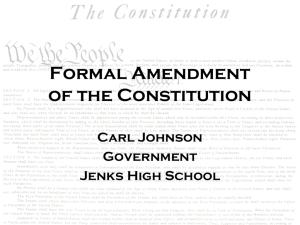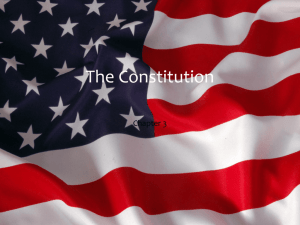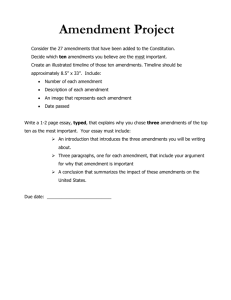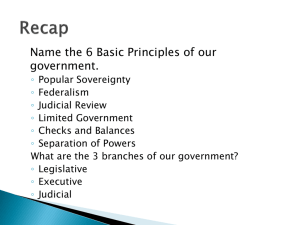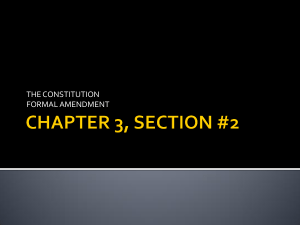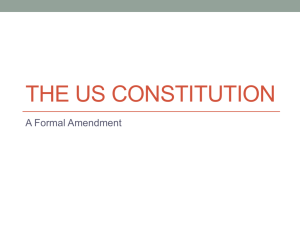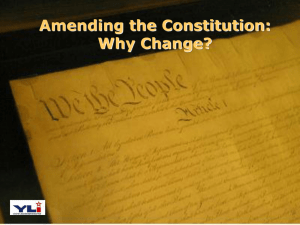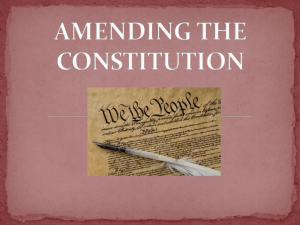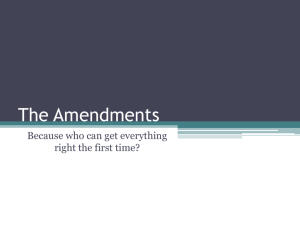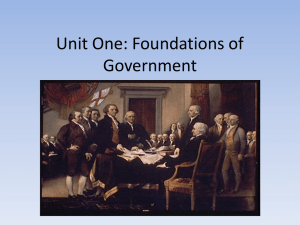Formal Amendment
advertisement
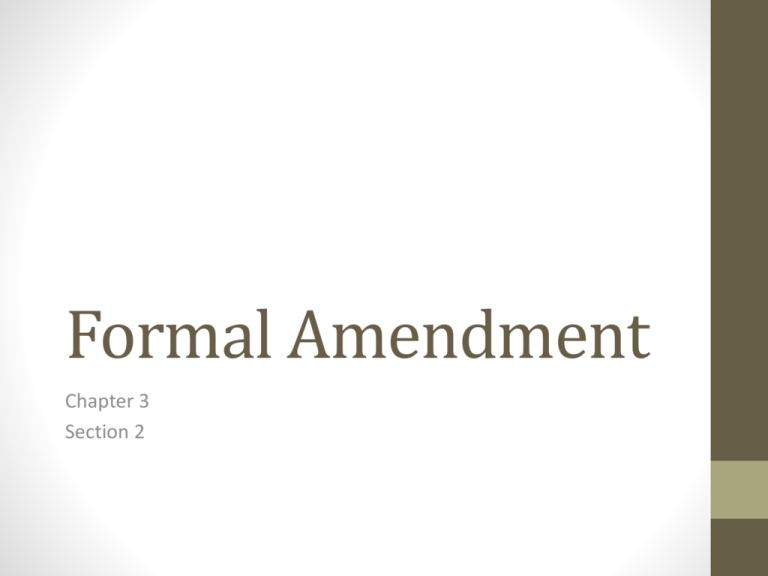
Formal Amendment Chapter 3 Section 2 Formal Amendment Process • Amendment a change in the words or meaning of a law or document. • Article V sets out two methods for proposal and two methods for ratification of amendments. • So, there are four possible methods of formal amendment: 1. An amendment may be proposed by a 2/3 vote in each house of Congress and ratified by ¾ of the State legislatures. • 26 of 27 amendments adopted this way. 2. An amendment may be proposed by Congress and ratified by conventions (a meeting to deal w/ matters of common concern) in ¾ of the States. • Only 21st amendment was adopted this way. 3. An amendment may be proposed by national convention, called by Congress at the request of 2/3 of the State legislatures; it must be ratified by ¾ state legislatures. 4. An amendment may be proposed by a national convention and then ratified by conventions in ¾ of the States. • The four different ways by which amendments may be added to the Constitution are shown here: Article V = Federalism • The Formal Amendment process emphasizes Federalism. • Proposal takes place at the national level and ratification is a State-by-State matter. The 27 Amendments • The Bill of Rights • The first 10 amendments • Proposed in 1789 and Ratified in 1791 • Guarantees of freedom of belief and expression, freedom and security of the person, and of fair and equal treatment before the law. • The Later Amendments • Grew out of different sets of circumstances. • Last one Ratified in 1992
